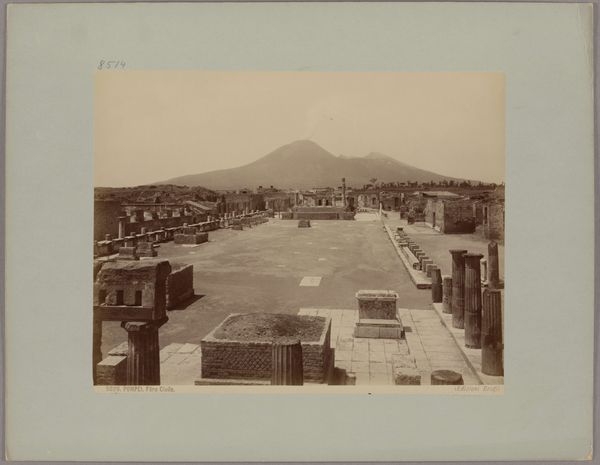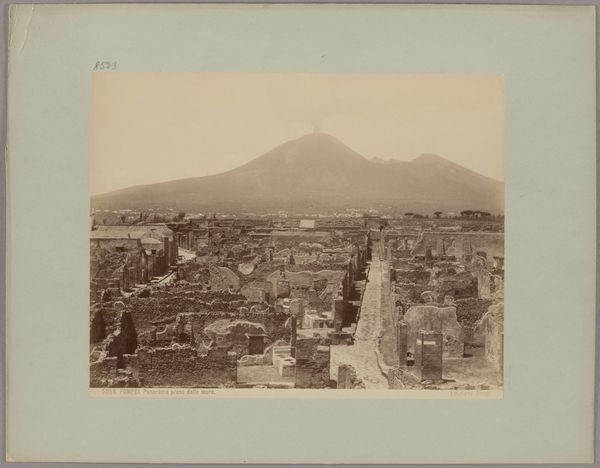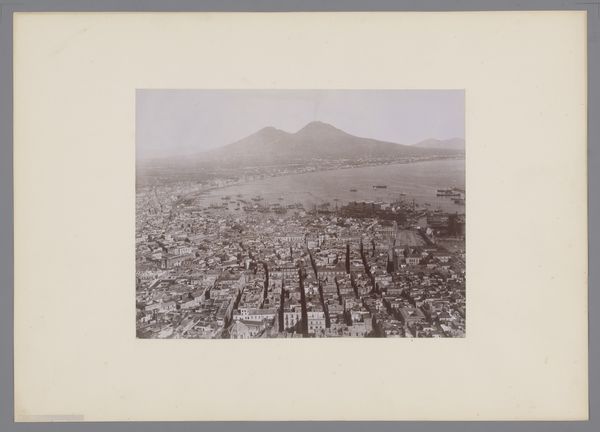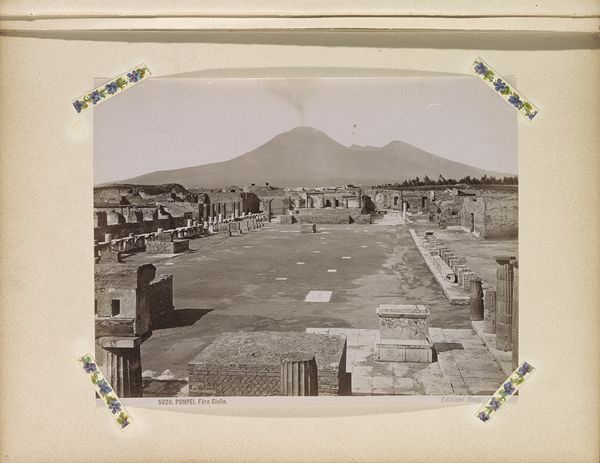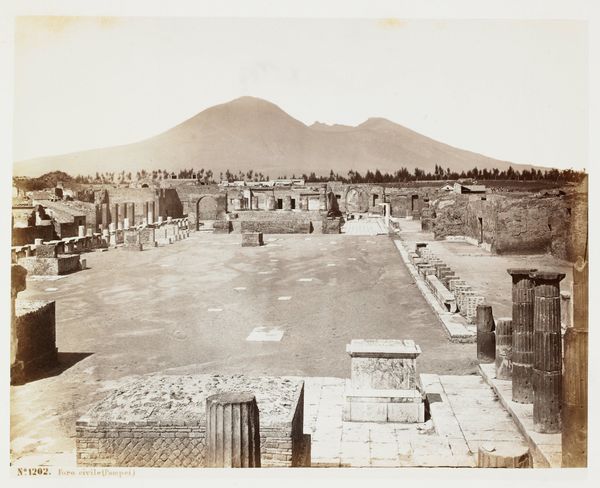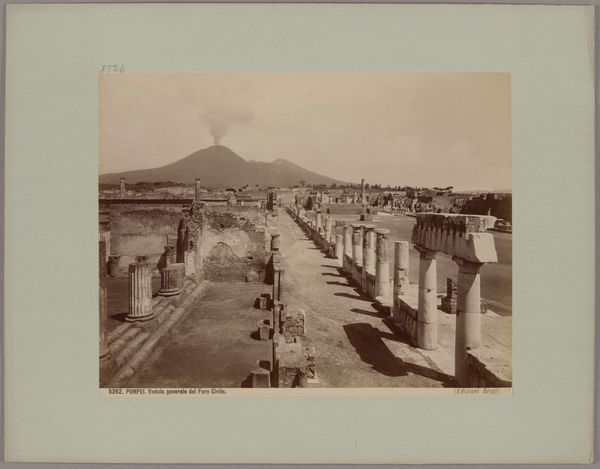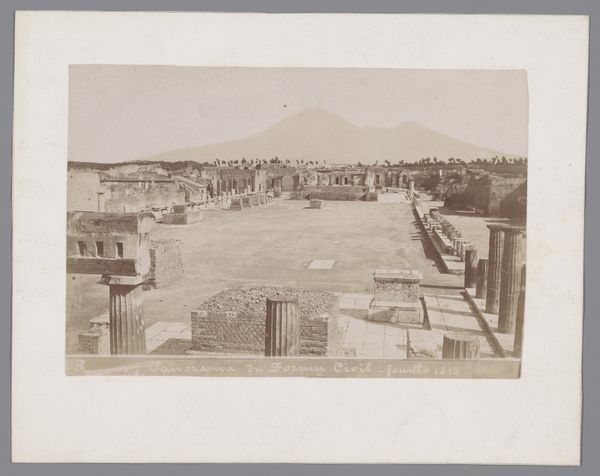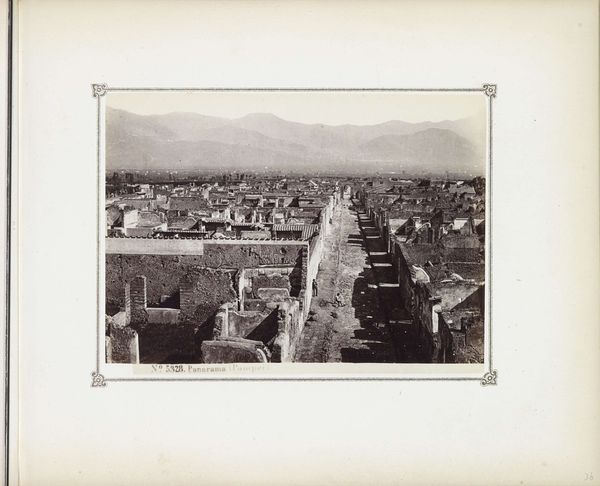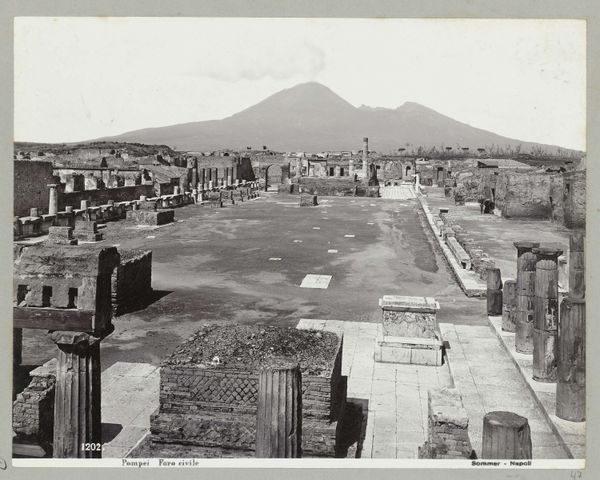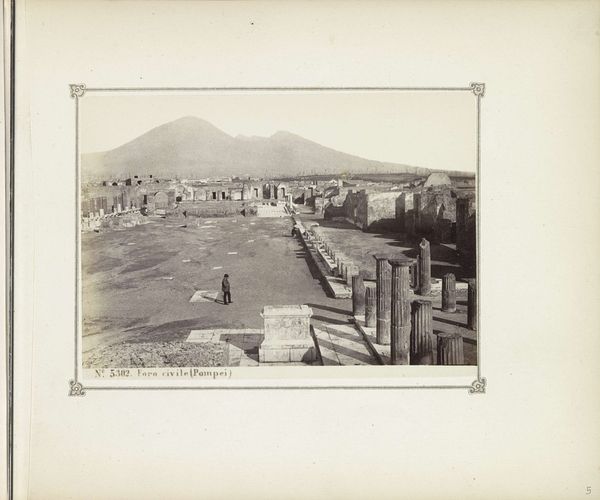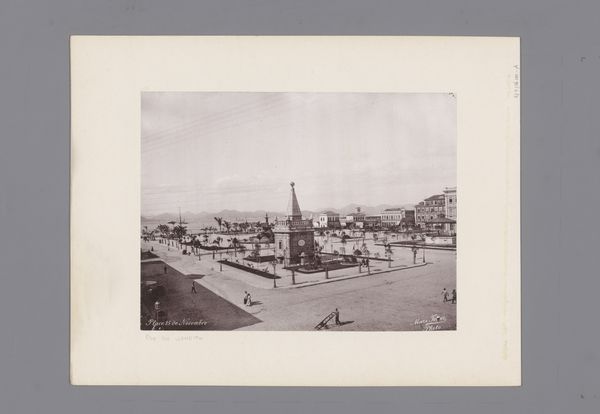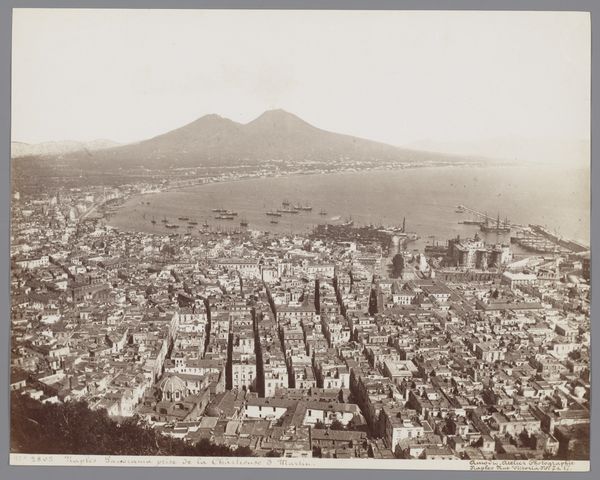
albumen-print, paper, photography, albumen-print, architecture
#
albumen-print
#
16_19th-century
#
landscape
#
paper
#
photography
#
ancient-mediterranean
#
mountain
#
albumen-print
#
architecture
Copyright: Public Domain
Curator: This arresting albumen print, "Pompeii Foro Civile, No. 5026," was captured by Giacomo Brogi sometime between 1870 and 1880. It now resides here at the Städel Museum. Editor: The stillness… it’s profoundly eerie, isn’t it? Like time just…stopped. You have these columns marching toward this…shadow of a mountain…the suggestion of that day’s terror. Curator: Indeed. What’s interesting here is that photography, a relatively new medium at the time, was being used to document and, in some ways, "authenticate" historical sites like Pompeii. These images became important documents and collectible souvenirs of sorts. Editor: It's as if the photograph is acting as a surrogate for presence. Imagine the photographer setting up his equipment—the weight of the past pressing down, and the threat of Vesuvius always looming. Do you think Brogi was conscious of framing a morality lesson, or more invested in merely cataloging a ruin? Curator: I imagine it’s a mix. There's an objective record being created, documenting architectural details and the layout of the Forum. However, the framing—that imposing mountain as a permanent backdrop—imbues the photograph with an inherent sense of foreboding. Brogi and his contemporaries understood the sublime and spectacular appeal of natural disasters as events capable of triggering emotion. Editor: It really works. I feel the ghosts underfoot, so to speak. You have that vast empty space, punctuated by remnants—column bases, partial walls. It provokes reflections on how fragile and temporal everything is. One minute, bustling civilization, the next...nothing but an enormous ashtray! Curator: Exactly! And consider the distribution of images like these. They were shown in exhibitions, they circulated among scholars, and they formed a kind of visual archive about the "grand tour." Editor: That makes sense. It brings a very ancient tragedy into the Victorian parlor, in a way. Almost domesticates the catastrophic. Makes me wonder about the act of witnessing at a distance and our complex dance with empathy and the sublime. Curator: I think both Giacomo Brogi's compositional choices and albumen process serve as critical elements. His legacy goes beyond an understanding of Pompeii at a certain place in time to provoke our emotional state. Editor: Ultimately it underscores the power of photography to evoke echoes—not just of place, but also of memory and oblivion. Pretty profound for a dusty old albumen print.
Comments
No comments
Be the first to comment and join the conversation on the ultimate creative platform.
